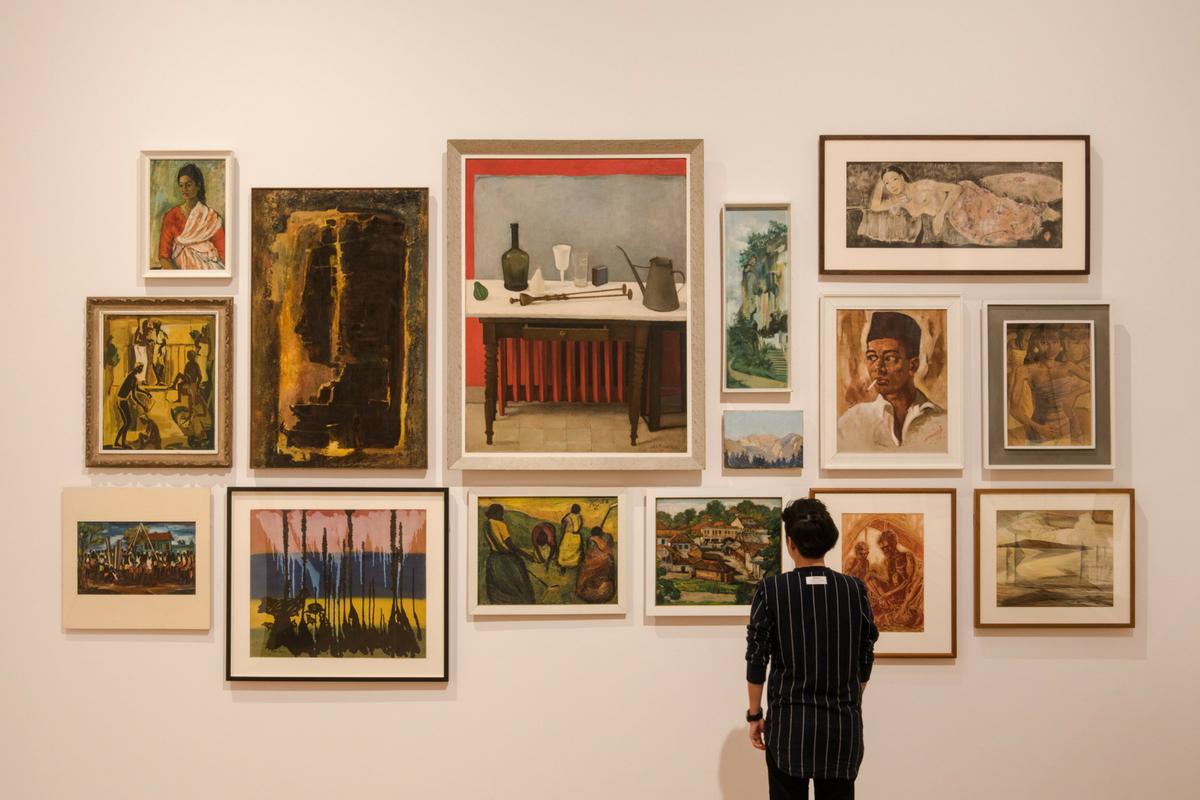
Five Reasons Why You Should Collect Art
There are a huge number of reasons why people choose to collect art. Some invest in sought-after pieces to either curate their own personal collections or sell on at auctions, while others simply enjoy it as a hobby. And while art collecting is often a pursuit associated with the ultrawealthy, anyone can collect art, and no matter your budget, there are a number of reasons why people get started. Below, we explore five of the most common motivations for beginning an art collection of your own.
1. To support artists you love
As with taking an interest in any creative endeavour, buying an artist’s work directly supports their passion and livelihood, while also helping raise their profile and potentially changing their future. This is especially important in such a competitive industry, as earning a substantial income as an artist is usually incredibly difficult — Arts Council England recently revealed that only one third of an artist’s income comes from producing art.
Consequently, many need to find additional work, so investing in your favourite artists allows them to keep doing the thing they love, while also strengthening the sector as a whole. What’s more, not only can you support an artist financially you can commission them to create your own one-of-a-kind piece and build a relationship with the creator.
2. To decorate your home
People collect art to fill up their walls, preventing a living space from looking bare and adding some personality to their homes. Hanging art in your home can reflect your own interior stylistic choices, complement each part of your home, and allow you to add a unique touch by experimenting with colour, design and patterns.
Many collectors also consider the frame they use as important as the art itself. A frame can be central to a work, not only protecting it from rough handling and environmental factors, but acting as a mediator between the viewer and the image. However, this is only achieved when the frame is carefully chosen to complement the artwork. Approaching a professional framing company will allow you to determine the appropriate framing services for your needs. The London-based Soho Frames notes that the process of creating a bespoke frame could require a full “design, 3D visualisation, mock-up and carpentry service” to ensure the best way to accompany your artwork.
3. To preserve history
Art can preserve history by depicting certain time periods, showing how the world looked during a specific era. You can also use it to learn about an individual artist, particular art movements, or even an entire culture from the art it creates — after all, as the saying goes, a picture paints a thousand words. For example, artists Yoshitomo Nara and Takashi Murakami created Kawaii-inspired pieces to help spread the popularity of Japan’s ‘culture of cuteness’, while graffiti artist Banksy uses his work as a political weapon to comment on social issues.
Whether it’s a gallery or an individual, collecting art ensures that important works aren’t forgotten about, and that future generations can continue to enjoy it. And in some cases, this is key to establishing an artist’s legacy. For example, if Theo Van Gogh didn’t have access to the works of his brother Vincent, it would not have acquired the level of fame it now has. Infamously, the artist only sold one painting in his lifetime, but luckily Theo dedicated himself to raising Vincent’s profile after his death.

4. To tell a story
Artists often use their work to tell stories, from historical events and social issues to events in the artist’s own personal life. Narrative works, for instance, portray well-known historical, religious, legendary or mythic tales, like Raphael’s The School of Athens, which portrays ancient Greek philosophers Aristotle and Plato.
Work which revolves around social commentary on topics like race, feminism and oppression are also hugely important to the industry, as they encourage conversation and often lead people to do more investigation about the issues they raise. For instance, polish artist Pawel Kuczynski creates thought-provoking pieces which reflect his thoughts on politics, social media and society at large. These kinds of artworks remind us of the ways we behave, and can offer an incentive to change things for the future.
5. Represent your personality
The art people collect can reveal quite a lot about their characters, from their likes and interests, to themes that are meaningful to them. For instance, an adventurous nature lover may buy landscape paintings of places they’ve visited, while avant-garde style pieces can show off someone’s eccentric side. Every artwork you buy over the years can help you compile a visual memory bank, reflecting different periods of your life.




